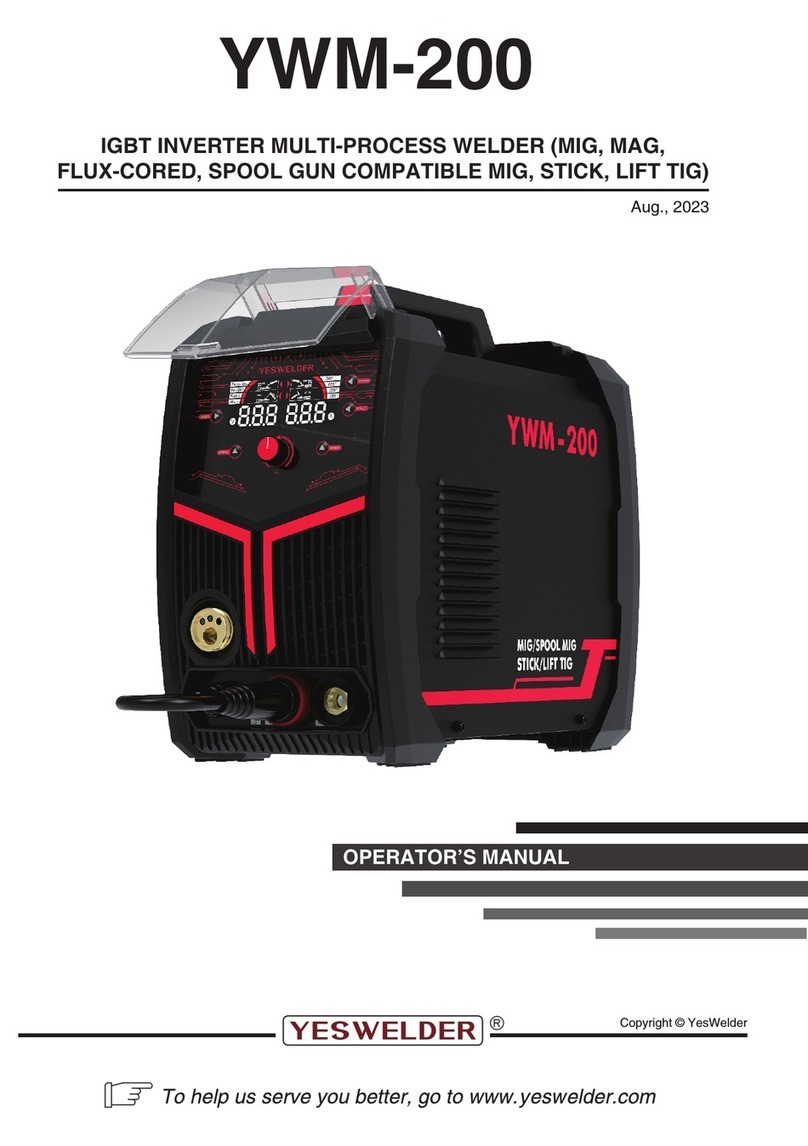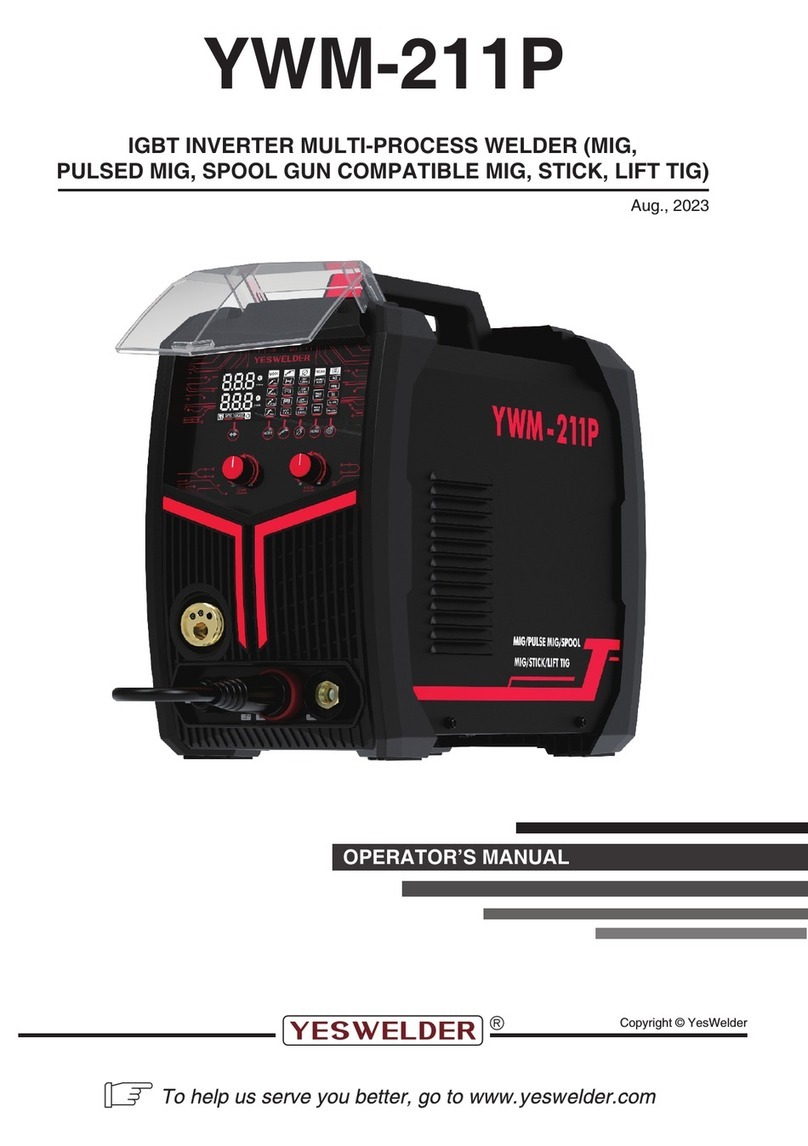
4
1.5 Functions and characteristics of the cutting machine
1. GENERAL DESCRIPTION
Advanced digital control mode
Plasma cutting machine CUT 55SD adopts international leading MCU intelligent digital control
technology, and all its major parts are performed through software. It is a digital control plasma
cutting machine, improved a lot in its function and performance when compared with the traditional
plasma cutting machine.
With PWM technology and high power component IGBT, it inverts the DC voltage, which is rectified
from 50Hz/60Hz input AC voltage, to 30K~100KHz AC high voltage. Then the voltage is dropped
and rectified to output the high power DC power supply for cutting. The machine adopts switching
power supply inverter technology, greatly reducing the volume and weight of the plasma cutter,
and obviously enhancing the conversion efficiency. Switching frequency is beyond audiorange,
which almost eliminates the noise pollution.
Good consistency and stable performance
Generally speaking, for a cutting machine with analogue circuit control or with analogue circuit &
digital circuit control, the performance characteristics are decided by the parameters of various
components. Cutting performance of the machines differ as a result of the inconsistent parameters
of the components, so even for the cutting machines of the same brand, their parameters often
differ from each other. In addition, cutting performance of the machine may change on some
extent, since parameters of the components may vary according to the environment such as
temperature and humidity, etc.
One of the characteristics of digital control is that it is not sensitive to the change of parameters;
the performance of cutting machine will not be affected by the change of the parameters of
certain parts. Therefore, the consistency and stability of digital control cutter is better than that
of traditional cutter.
Powerful cutting performance
This machine is economic and practical since it can cut metals by adopting compressed air as
the plasma gas source. The cutting speed has increased by 1.8 times when compared with
oxyacetylene cutting. It can cut thick steel plates such as stainless steel, copper, cast iron and
aluminum conveniently and quickly. It is easy to ignite arc by adopting HF arc ignition mode,
and post-flow function is available. With simple operation and high cutting speed, smooth cutting
surface can be obtained, and polishing is unnecessary.
Advanced inverter technology
The forward-looking design concept of this machine and the application of a large number of
advanced and mature technologies can protect user’s investment to the greatest extent.
This is a digital plasma cutting machine with perfect function, high performance and advanced
technology. CUT 55SD is an ultra-portable plasma cutting system suitable for a variety of application
requirements. It can be used in handheld cutting and robot cutting as well. CUT 55DS can cut
conductive metal, such as low carbon steel, stainless steel and aluminum. The cutting thickness
can reach up to 20 mm and perforating thickness can reach up to 12 mm.

































